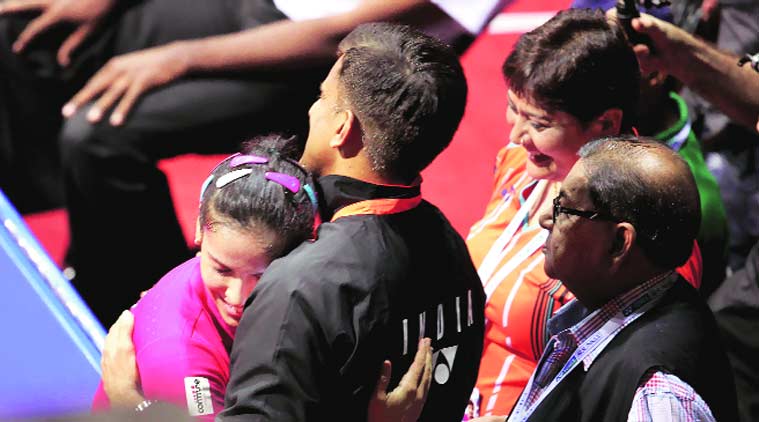Want Saina Nehwal and my players to not depend on me on court, says coach Vimal Kumar
Badminton, women’s singles prominently, is notorious for coaches cramming information into their wards during intervals.
 Saina Nehwal and coach Vimal Kumar.
Saina Nehwal and coach Vimal Kumar.
A nervous glance back after each point. Flurry of instructions from the coach sitting behind the shuttler, quick acknowledgment from the athlete and then a response to the opponent’s challenge that follows the mentor’s instruction. It’s a sequence of events in international badminton that plays out often, with the top-most names glancing behind looking desperately in crunch situations for the coaches to sort out their puzzles.
It’s something Vimal Kumar, Saina Nehwal’s coach, doesn’t approve of, though the prevalent practice of coaches guiding players through every step of the way in the contest is popular.
Vimal is currently in a minority of one.
“This coaching method is a huge distraction, and I’ve been against it always,” he says, before leaving for Jakarta’s World Championships where he will aim to help Saina Nehwal pick an elusive medal after five quarterfinal finishes.
Even the pressure of the missing medal, and the need to nudge Nehwal closest to it, doesn’t change his opinion on the eve of the competition. “Look, when you play sport at the highest level, you need to learn to deal with everything happening in a match on your own. I want my players to be independent, and think on their feet. That is what reveals true character,” he explains.
Vimal prefers tennis, where eye contact with the coach is strictly forbidden, and where on-court coaching and instructions are frowned upon in recent years. “It’s how professional sport should function. Badminton needs to head in that direction.”
Badminton, women’s singles prominently, is notorious for coaches cramming information into their wards during intervals, with camera-mics even amping up what’s said.
“It’s great for television, but there’s too much pressure on the athlete and coaches, too much advice flying across. It’s the athlete competing there, you should be able to deal with it all of it, the ups and downs of a match, the strategy changes. That is what will show your ability as a complete player, not merely executing the coach’s plans,” he adds.
While execution is all-important, the burden of the thinking ought to move to the players, Vimal reckons. “I don’t want Saina to be dependent on anyone. Don’t want her to be like the Chinese, who are at times spoon-fed everything with tactics given on a platter,” he says of the World No 2, adding that it could go a long way in badminton being perceived on the same lines as tennis.
The Chinese, shuttle’s most dominant powerhouse, are known for their reliance on the court-side coaches, and women’s singles players from across the world have followed in same fashion – a trend that Vimal insists needs to be broken.
If the game is to not look like robots on remote controls, on-court coaching – which includes whispered tips freely given in between two rallies, aside of the minute long intervals between sets or at changeovers – needs to fade off, or even revoked.
“Fact is, you are being trained 365 days in the year by the coaches. But on the court in crunch situations, we need to see the player fight it out. That will add to the narrative of the sport, lend more character to the players,” he says.
“Coaches can prepare you, but ultimately you have to write the exam.”
Live Star Sports 4 from 7:30 am
(Prannoy v Tjong, Kashyap v Meijs)
































